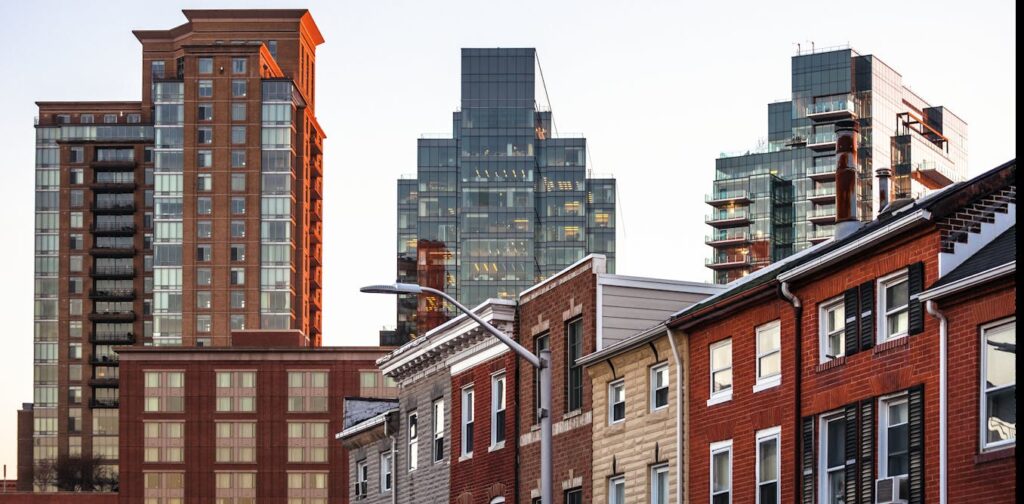If you live in one of the most economically disadvantaged areas of the city, you may find that the government is directing a smaller proportion of public funds to your area. And usually you'll be right.
This is true even for programs specifically designed to benefit low-income communities. In the long run, federal funds tend to flow to relatively wealthy areas.
That's what a recent study of the U.S. Department of Housing and Urban Development's Community Development Block Grant program found.
We looked at 20 years of data from the CDBG program, which in 2022 provided approximately $4.3 billion to cities and states across the country. Federal rules require that 70% of these funds be spent in areas where the majority of households have low to moderate incomes. Researchers abbreviate this category as “LMI.”
To count as LMI, a household's income must be at or below 80% of the area median income. This means that in the Baltimore metropolitan area, where the median household income in 2023 was $121,700, households with incomes up to $97,600 would be eligible. If more than 51% of her households in a census tract have incomes below that income, then that tract is eligible for her LMI funds.
We asked what would happen if that share increased. Are these communities more likely to receive additional funding?
Compared to cities, we found that neighborhoods with the highest proportions of low- to moderate-income households were less likely to receive CDBG funding than neighborhoods closer to the 51% threshold. In other words, the poorest places were not the ones most likely to receive money.
Those in a disadvantaged position have less to gain
As scholars of political science and public administration, we were not entirely surprised by this finding. Other researchers have documented similar trends for other programs that may target areas that have begun to gentrify, such as Opportunity Zone programs.
These findings are also consistent with an analysis of CDBG programs in several metropolitan evaluations. Our study, which examined more than 15,000 census tracts in nearly 1,300 cities, concluded that these effects are not limited to a few urban communities.
Moreover, economic development policies are already exacerbating these effects. Property tax breaks and other tax policies aimed at attracting business and development often deprive schools of critical funding and exacerbate social and racial inequalities.
This is not just a federal program issue. Political scientist Jessica Trounstein, in her seminal 2018 book Segregation by Design, argues that cities invest in public investments in ways that systematically exacerbate existing inequalities. It showed that it was distributed.
In the case of the CDBG program, local governments have significant discretion over the allocation of funds. This creates a conflict between her two goals of growth and equity. Will the government optimize economic growth, seek maximum return on investment, and increase taxes through Community Development Funds? Or will these funds be used to support the hardest-hit and economically disadvantaged communities? Should I use it?
Cities must face trade-offs regarding the types of investments they make and where they invest. For cities, this could mean using money to build public parks in wealthy neighborhoods or renovate youth service centers in very low-income neighborhoods.
If you think these examples are obvious, you might want to mention that Farr, Texas, used a portion of CDBG funds to purchase equipment to host a festival, or that Comstock Township, Michigan, council unanimously voted to support CDBG. Consider the decision to use the funds to expand the water supply capacity of local vessels. Brewery.
Both activities can be important for economic development. However, qualifying these activities as community development ignores the focus on helping the most disadvantaged.
From the federal government to city governments, lawmakers are increasingly focused on improving social equity. The reality is that many U.S. cities are grossly unequal, and the most disinvested areas already suffer from socio-economic challenges. Adults and children living in these environments often live with increased risks for everything from asthma to toxic lead exposure.
This is why it is so important that programs aimed at reducing inequalities in disinvested communities can be systematically targeted at relatively wealthy areas, justifying the return on investment. This is a cause for concern.
What the government can do
Fortunately, policymakers are not powerless. Our research shows there are steps that governments at all levels can take.
At the federal level, the U.S. Department of Housing and Urban Development, as well as state and local governments, may tighten requirements on how CDBG funds are allocated. For years, scholars have sought to change funding formulas to improve equity.
Because states determine how CDBG funds are distributed to local governments, they could play an important role in improving access to social equity. Specifically, it could abolish the competitive bidding process for these funds and instead prioritize local governments with high needs.
Finally, local governments can use redistributive spending mechanisms, such as providing CDBG funds for youth programs, disability services, and even living expenses, to ensure that areas with the greatest need receive these funds. can be considered. They should also work with community development organizations and neighborhood groups when considering spending priorities.
It is especially important to get input from the community. That's because, as our research found, the poorest neighborhoods are more likely to receive CDBG funding when community development corporations (non-profit organizations representing local interests) participate in decision-making.
In community development, as in many things in life, who is at the table matters.


